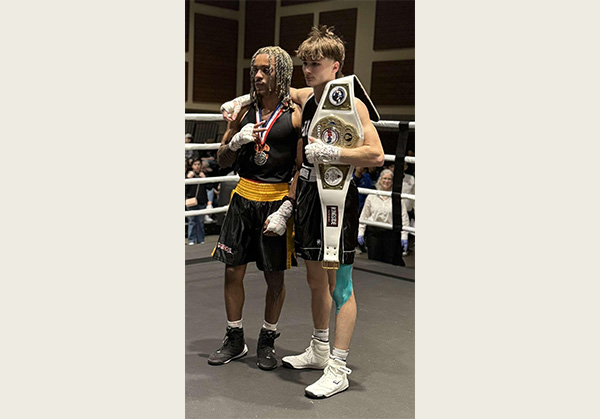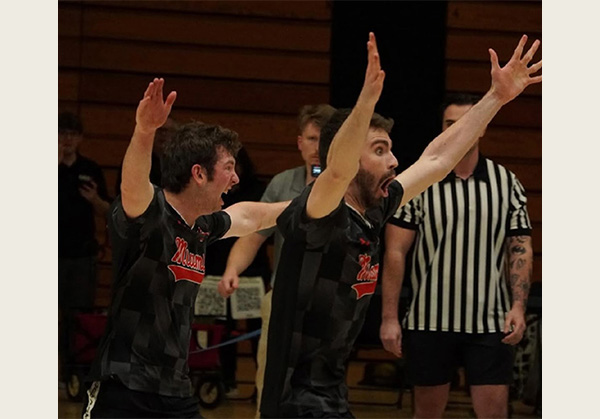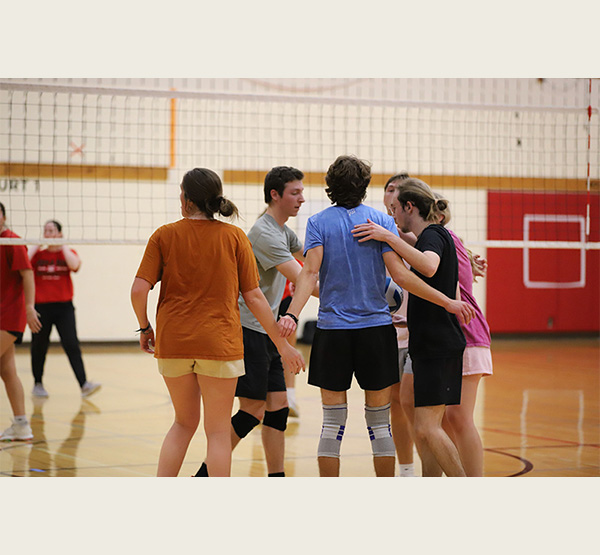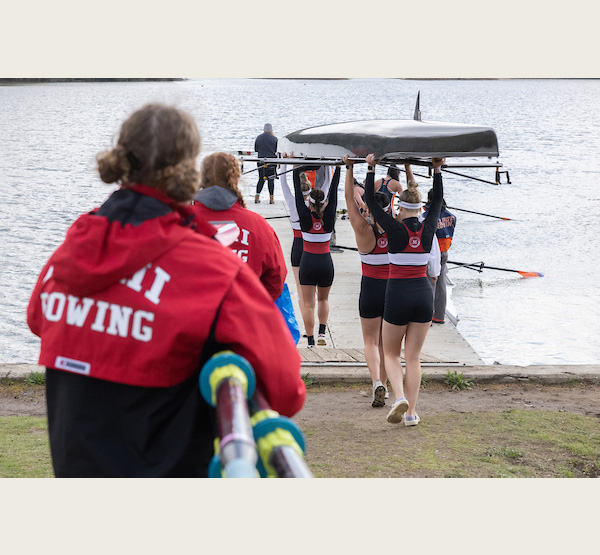Miamians become national champions in club sports
About 1,500 Miami students participate in club sports annually

Miami University senior Daniel Gomez recently accomplished something he has dreamed about for years: He won the National Collegiate Boxing Association’s national championship for his 125-pound weight class.
“Winning the championship definitely felt like the perfect ending to my Miami experience. It brought together everything I worked toward over the last few years,” said Gomez, the Club Boxing president who will graduate this month with a degree in Political Science and minors in Business and History.
Gomez is among approximately 1,500 Miami students who participate in club sports annually. They compete against students from other universities — as opposed to intramural athletes who compete on campus against other Miami students.
“Club sports are geared toward the next level of commitment and competition,” said Geremy Bardon, associate director of club sports, summer camps, and special events at the Recreation Center.
“The 50-plus club teams compete against other universities as part of a conference or national governing body. These teams are run as student-led organizations with an emphasis on leadership, community, and student athletics,” he said.

A 'sense of camaraderie'
Besides Gomez’s championship win, the Club Dodgeball team also won a national championship this spring. It defeated the University of Cincinnati 2-1 in overtime and topped the Top 25 College Dodgeball postseason power rankings ahead of teams such as Ohio State, Illinois, Virginia, Nebraska, Maryland, and Ole Miss.
Dylan Corson, a sophomore majoring in Finance, joined Club Dodgeball at the beginning of this academic year because he wanted to “branch out and join a sports club for a sense of camaraderie.” He found the 18-member team to be very welcoming.
They are seeing “tons of interest” from people wanting to join the team for next season, said Corson, who can’t wait to play again.
“The team's executive board has made a position for me as data manager,” he said, adding that means he tracks all of the teams stats at games. “I have also taken on a larger role in the NCDA (National Collegiate Dodgeball Association) in helping set up the groundwork for more stat tracking leaguewide, and I am getting great hands-on experience with Google Sheets and Excel.”
Dodgeball is Miami’s latest national championship club team.
Last year, the Club Golf team won national championships during both fall and spring semesters, Bardon said. The Club Men's Soccer team won the national championship in the open division and the Men's D2 hockey team was the national runner-up, Bardon said.
Meanwhile, the Equestrian Team recently made it to nationals, and Miami’s Dance Team attended the National Dance Association’s 2025 College National Championships in Daytona, Florida, where it finished second in pom for Division 1A.
The Dance Team promotes team spirit at home football and basketball games and performing at other events on campus. Its motto is DTheart, which encompasses team values including teamwork, accountability, adaptability, passion, work ethic, and commitment.

A rich history of intramural sports
Intramural sports are leagues and tournaments offered to students on campus with an emphasis on participation and fun.
Students put together their own teams and participate at a recreational level in a variety of sports and activities offering an outlet for social connection and various health and wellness benefits, according to Ruchelle Dunwoody, director of intramural sports.
Miami is recognized as one of the first collegiate institutions in America to establish a program of intramural sports in the 1920s. The program was created for both male and female students by Margaret Phillips and Thomas Van Voorhis.
Graduating senior Brooke Stuart loved playing intramurals on campus.
“Beginning my sophomore year at Miami, I wasn’t involved in a lot of social groups or clubs. I had a desire to be a part of a team separate from my schoolwork,” said Stuart, a double major in Kinesiology and Healthcare Sales.
As she was leaving class one day in Phillips Hall, she spotted a flyer with information about intramural sports teams and later signed up for co-ed basketball.
“I decided to really step out of my comfort zone and join alone as a free agent. There were a couple of other students who joined as free agents, so they put us on a combined team called the Free Agent All Stars,” she recalled.
The teammates became good friends and went on to be undefeated that year and win the championship.
“Some of my favorite memories at Miami were found in intramural sports," she said, urging other students to discover them, too. "Whatever your sport is, I encourage you to get some friends together (or just you) and join a team!”

Club teams: from oldest to newest
Club teams can start, end, or go dormant depending on interest. “Pickleball is one of the newest sports to be added, while the triathlon club has just recently become active again,” Bardon said.
Miami has some unique club teams ranging from aerial arts to Tough Mudders, clay shooting to jump rope, and even a water ski team.
Some of the most recent teams to end or go dormant are Quidditch and football. Each team operates a little bit differently and has their own history and story. Hockey and soccer are among the most competitive teams to make, Bardon said.
“Some of our largest teams in participant numbers include equestrian, rowing, running, golf, swimming, tennis, and water ski,” he said, noting that some teams are co-ed.
Ice skating, which started in 1953, is listed as Miami’s oldest established team that is still active.
“The majority of our club teams compete regionally for the bulk of their activities, but there are national competitions that have had teams travel to just about any part of the country,” he said. Teams have gone to California, Texas, Florida, Louisiana, Massachusetts, Minnesota, and Missouri to name a few.
“The chance to compete, travel, run and operate a team, and represent Miami University, are the out-of- classroom experiences that are very memorable for Miami students,” Bardon said.

A fighting spirit
Gomez of Astoria, New York, had boxing matches three days in a row in Lawrenceburg, Indiana, April 10-12. He defeated last year’s national champion from the University of Southern California to become champion.
“Winning was an unbelievable feeling. It was the result of years of training, early mornings, late nights, and a lot of hard work,” he said. “What made it even more special was that during the tournament, I beat two opponents I had lost to earlier in the season. Proving to myself that I could overcome adversity and bounce back against opponents who had beaten me before meant a lot.”
Serving as the president of the Boxing Club gave him leadership and communication skills, said Gomez, who worked his way through school as a boxing trainer in Hamilton, along with other jobs.
“Managing practices, mentoring teammates, and handling club operations helped me grow a lot personally and professionally,” he said. “Additionally, I was able to meet some of my best friends in the club who helped push and support me both inside and outside the ring."